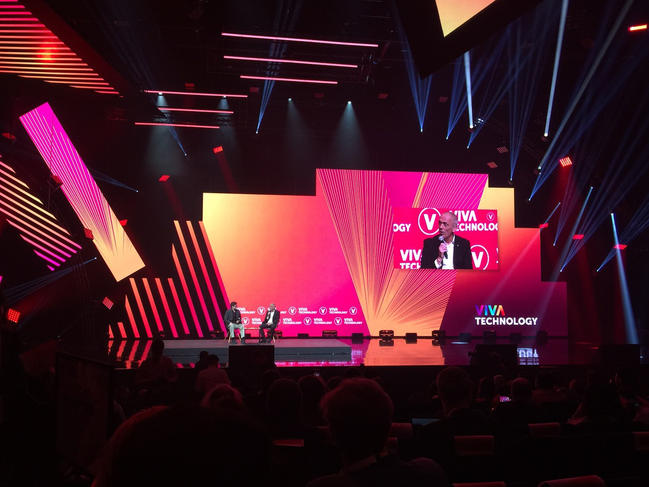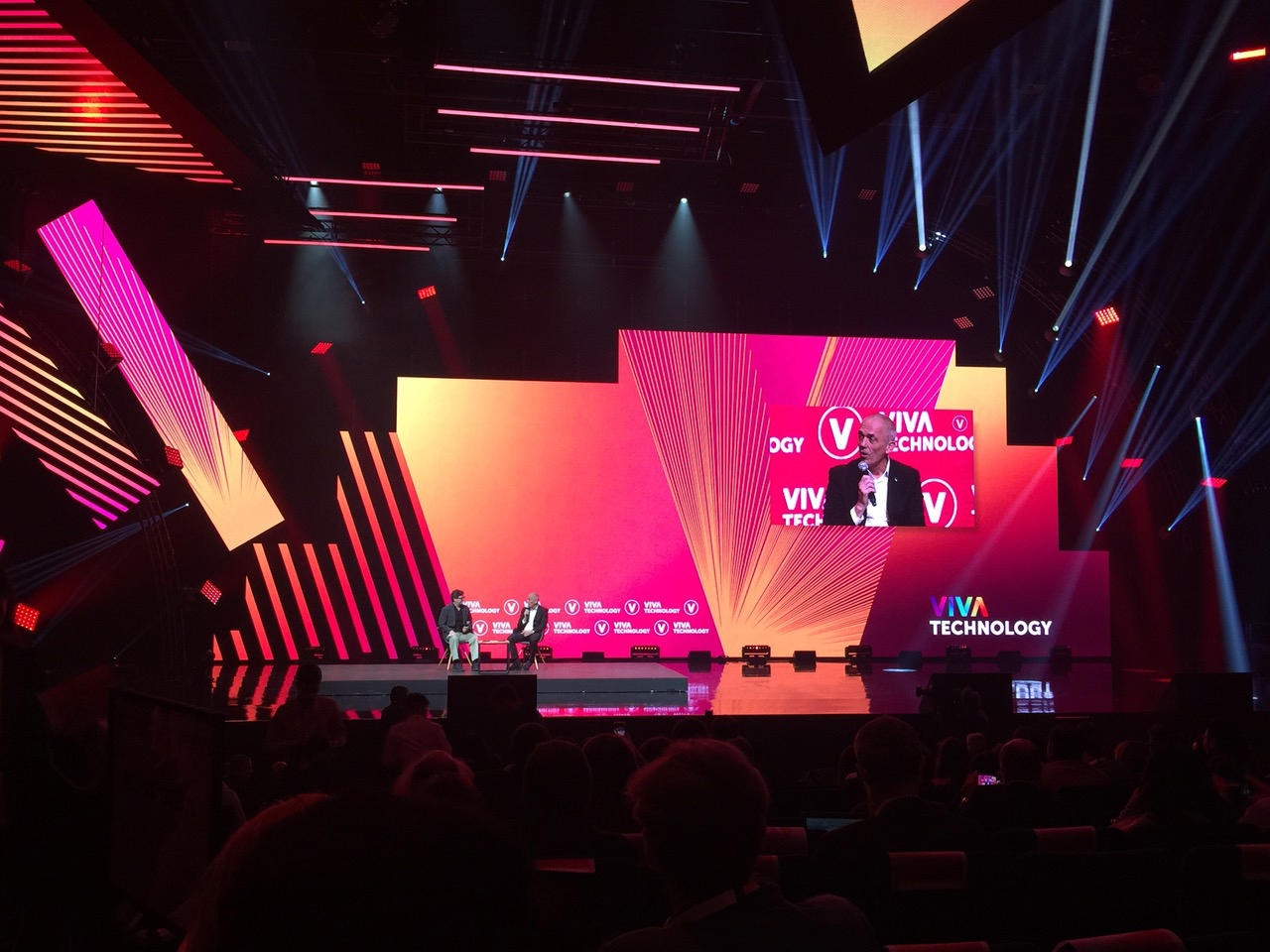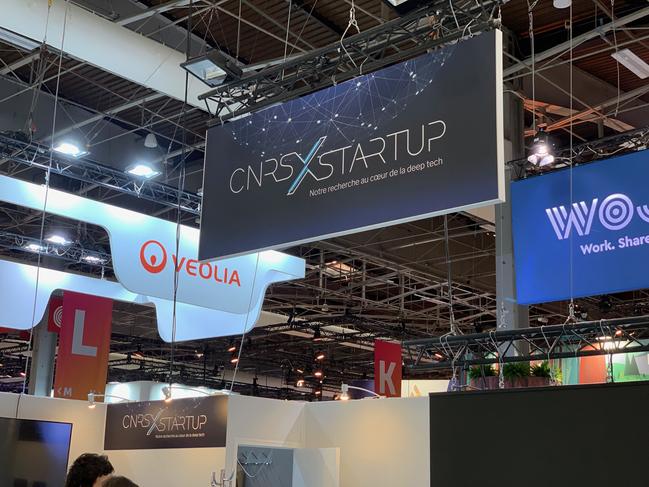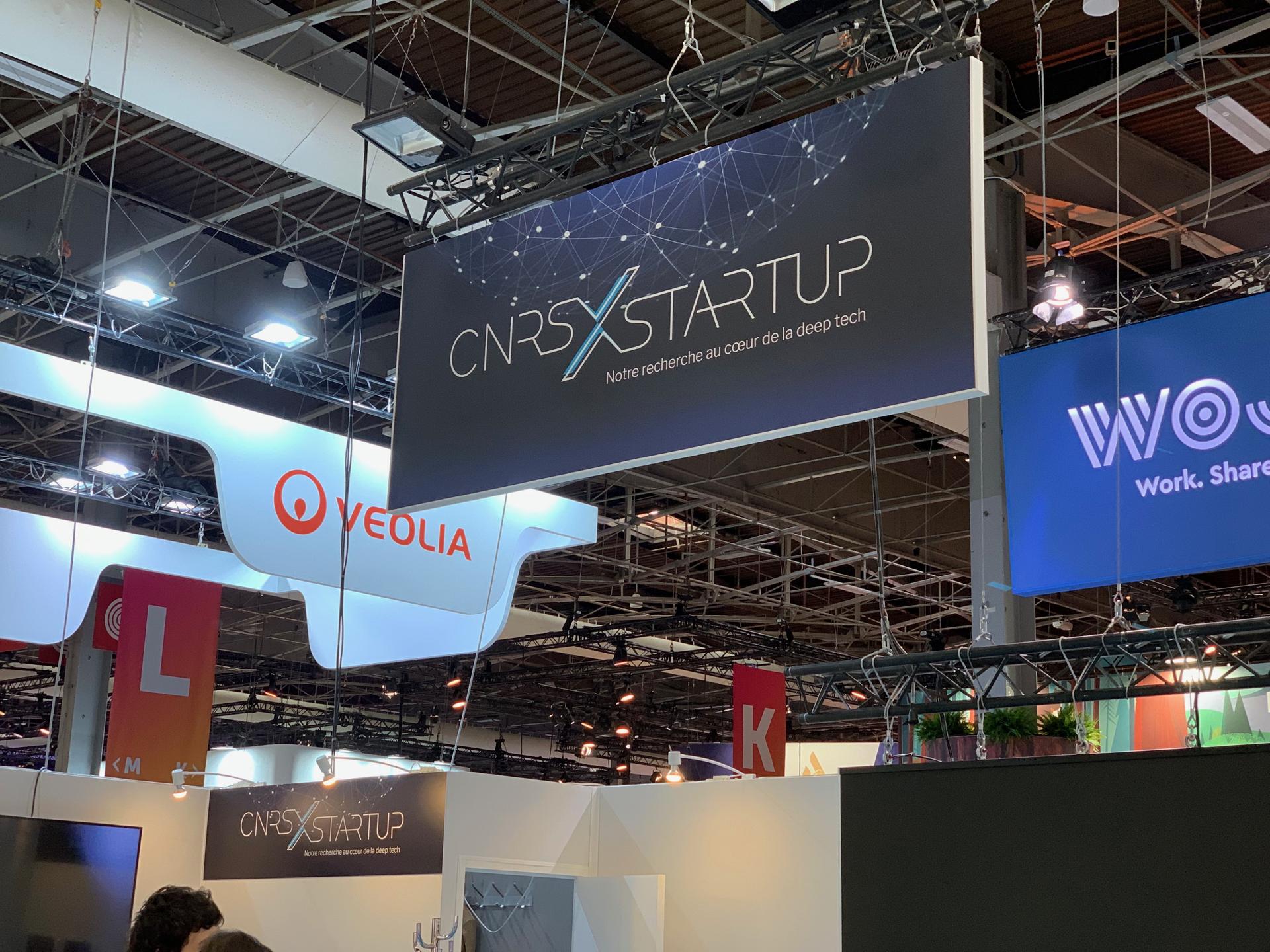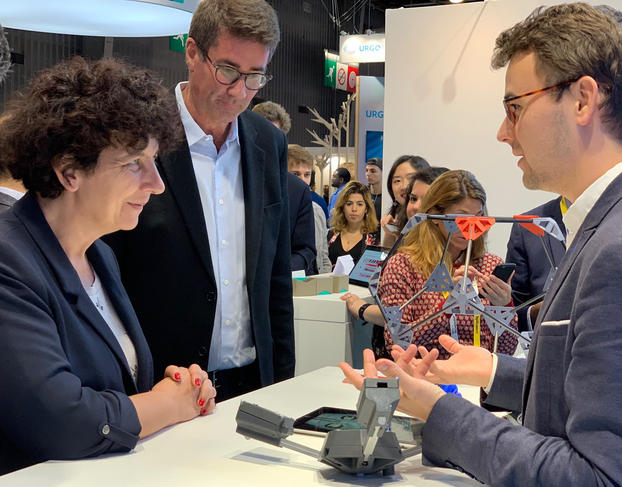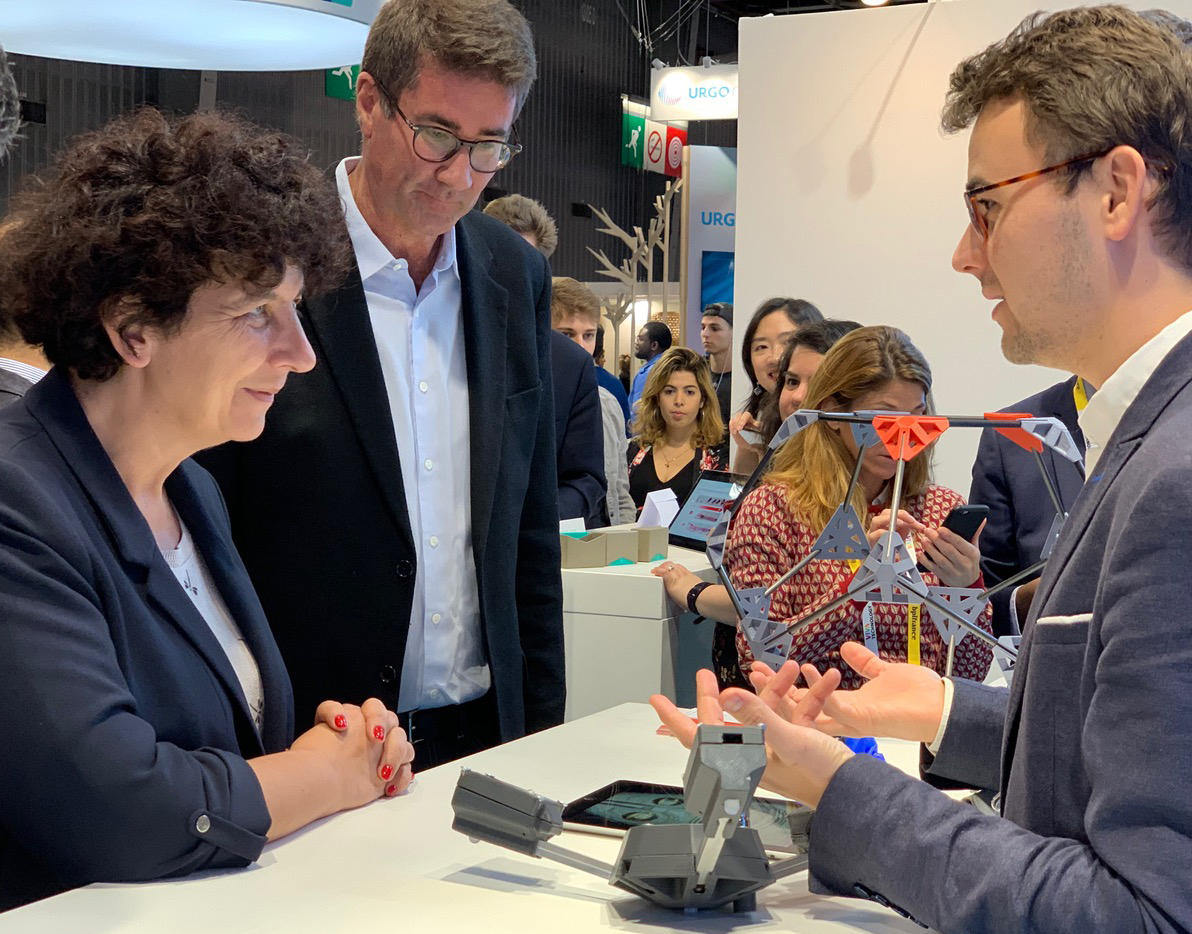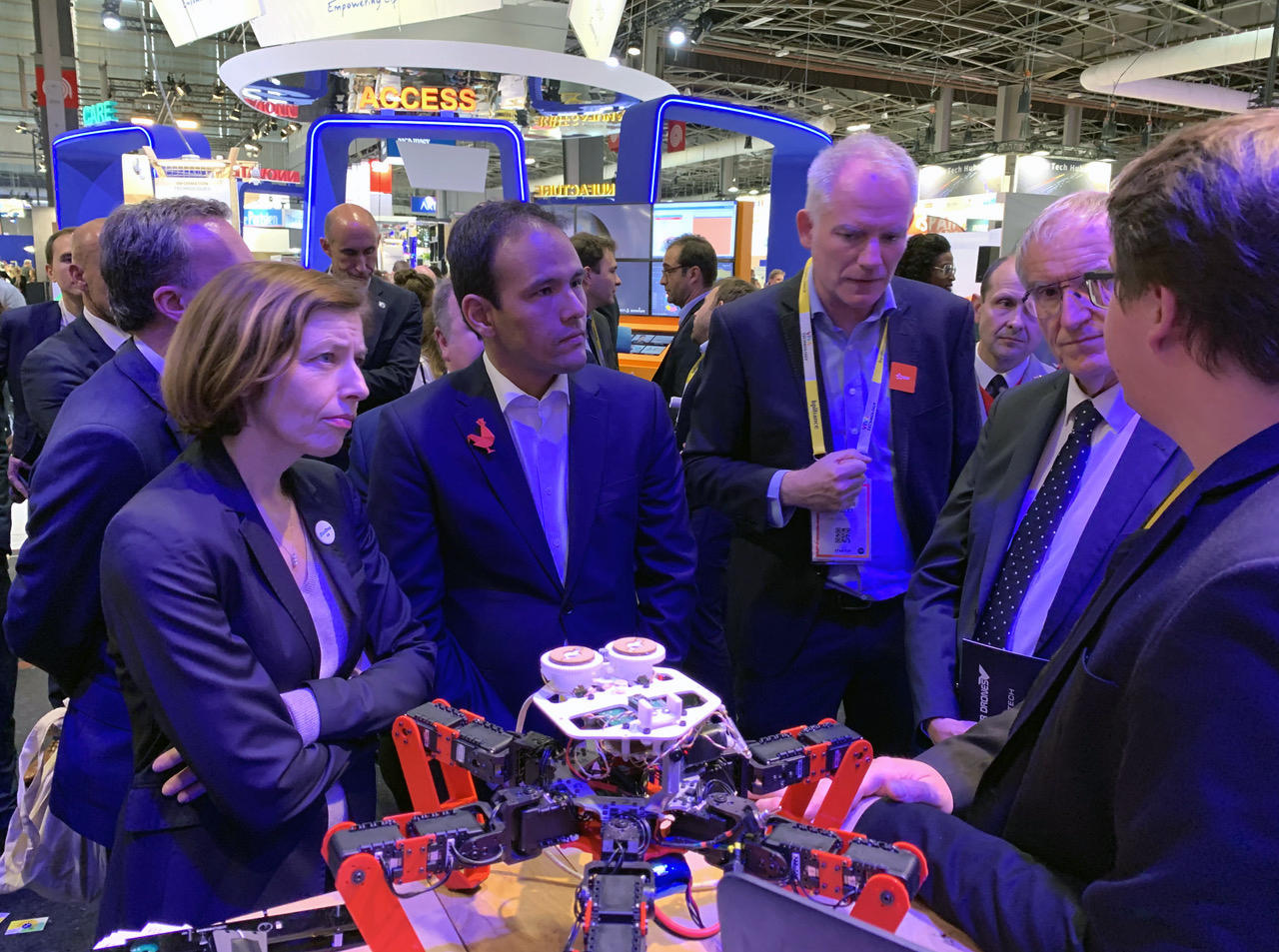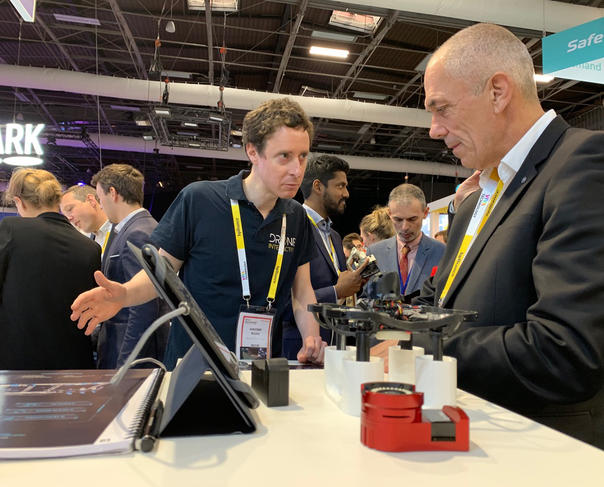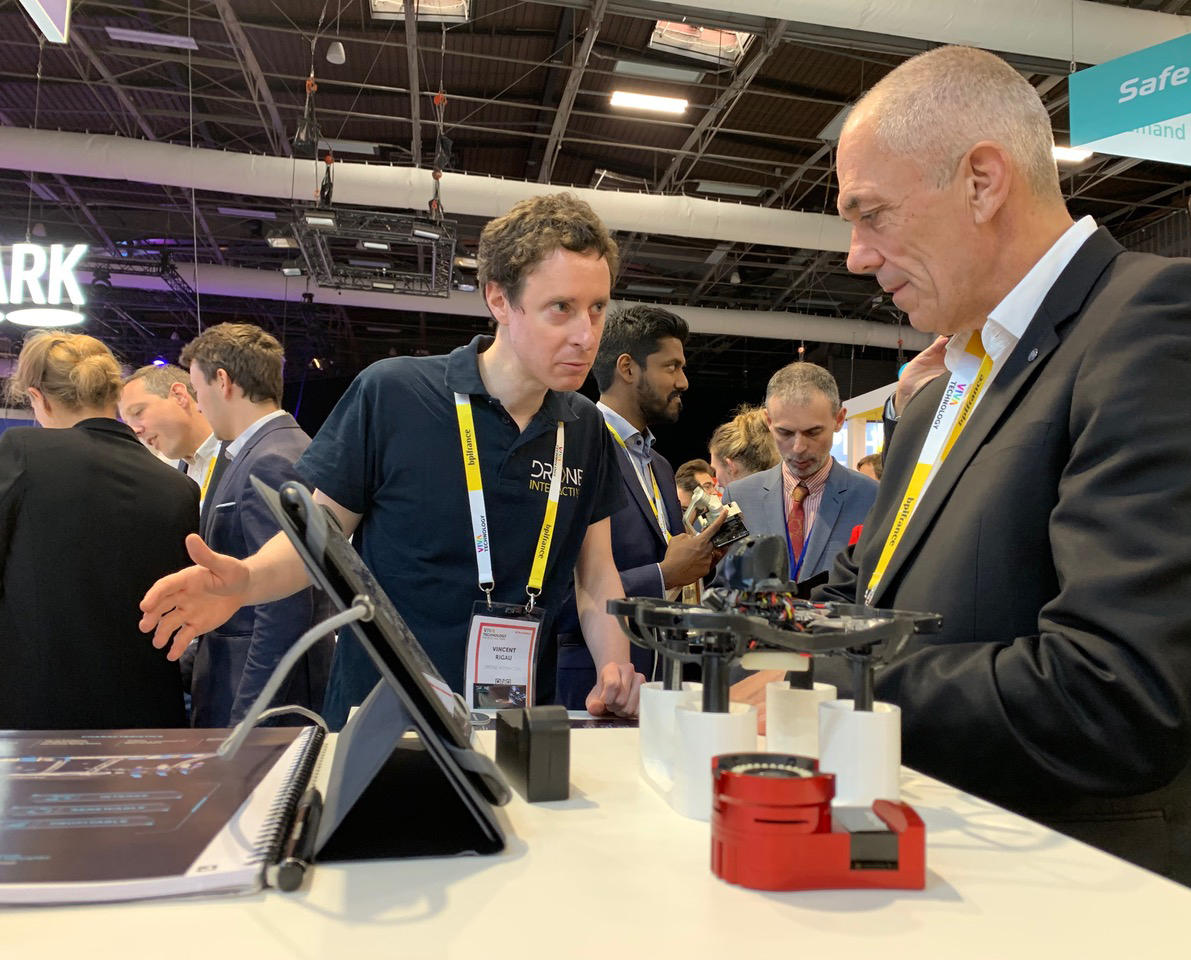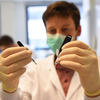You are here
The CNRS at VivaTech
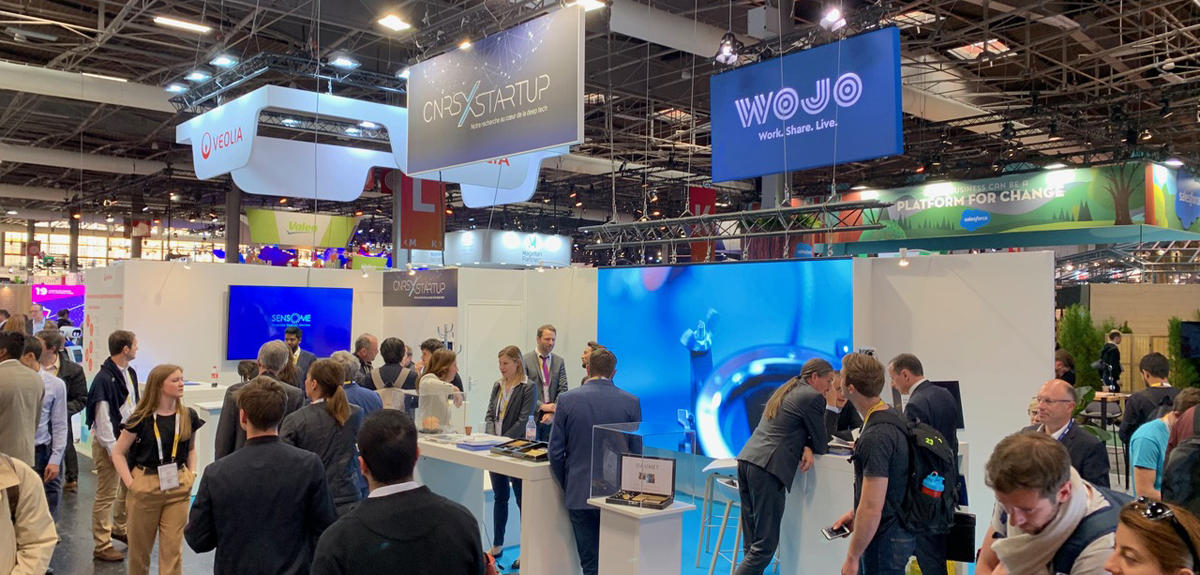
Viva Technology (VivaTech) promotes collaboration between major companies and start-ups in an effort to share the technologies of the future with a broad public. For Jean-Luc Moullet, the new Chief Technology Transfer Officer of the CNRS, this event highlights the organisation's commitment to developing start-ups that find applications for the results produced in its research laboratories. The variety and quality of the start-ups that were present illustrate the diversity and wealth of research conducted at the CNRS.
The seven start-ups featured at the CNRS booth included:
Tiamat designs, develops, and produces sodium-ion batteries in a standard industrial format. These batteries could mitigate some of the limitations of the lithium-ion batteries that currently prevail, such as charging speed, lifespan, and the cost of production. Located in Amiens (northern France), this young company emerged from the French Research Network on Electrochemical Energy Storage (RS2E) led by the CNRS, and now has a few dozen functional prototypes available. Some of them, including an electric scooter, will be displayed at the CNRS stand.
Miniaturised low-altitude satellites represent the future of global connectivity and real-time Earth monitoring. ThrustMe enables this new space industry to be economically and environmentally sustainable by developing and marketing electric propulsion systems, which will be on display during the fair. This start-up was founded in 2017, and emerged from the Laboratoire de physique des plasmas (CNRS/Ecole polytechnique).
Curve One specialises in the production of curved sensors for the drone, autonomous vehicle, and photography and video camera markets, as well as for astronomy and scientific instrumentation. Its sensors improve clarity, reduce distortion, and eliminate vignetting (the dark corners present on certain photos). Based on the expertise of the Laboratoire d’astrophysique de Marseille (CNRS/Cnes/Aix-Marseille Université), Curve One proposes a comprehensive solution for boosting images, and will be on display at VivaTech.
The start-up Greenerwave, a spin-off of the Institut Langevin (CNRS/ESPCI Paris), has designed an intelligent and low-cost metasurface to control waves. This innovation, presented at VivaTech, will make it possible to develop flat satellite antennas with electronic reconfiguration to bridge the digital divide, ultra-high resolution radars for autonomous vehicles or RFID infrastructures for real-time inventories.
The result of research carried out at the laboratoire Modèles et simulations pour l'architecture et le patrimoine (CNRS/Ministère de la Culture), Mercurio proposes a scanner that can quickly and autonomously create realistic 3D models of works of art of all sizes, ranging from a vase to a sculpture. It offers an unprecedented means of enhancing museum collections. Demonstrations of their scanner will be performed throughout the event.
Based on research conducted at the Laboratoire d’hydrodynamique (CNRS/Ecole polytechnique), Sensome has developed ultra-miniaturised sensors that use artificial intelligence to identify the biological nature of tissues in real time. Integrated in the intravascular Clotild™ probe, their technology can, for instance, categorise blood clots in order to help doctors during the treatment of an ischemic stroke.
SpinD Gold is an innovative combination of gold and tungsten. This novel material was obtained in connection with research in spintronics (a field seeking to exploit magnetism in electronics), led by Cyrile Deranlot and Albert Fert, winner of the 2007 Nobel Prize in Physics, at the Laboratoire mixte de physique CNRS/Thales. Used by the start-up DAUMET, this new white gold is the whitest gold alloy ever obtained. Its brilliance and colour are first-rate in comparison to any other white gold on the market, and its composition based on tungsten makes it an environmentally friendly material. It is intended for the luxury goods and jewellery industries.:
Bio Inspir’ studies the depolluting qualities of certain land and aquatic plants. This start-up is especially interested in water mint, a small plant native to the southern French Occitanie region that has exceptional capacities for purifying water containing metallic and organic elements. Used in the form of a powder or alive, this plant can purify contaminated water directly at industrial sites. Bio Inspir’ finds industrial applications for the research conducted by the laboratoire de Chimie bio-inspirée et innovations écologiques (CNRS/Université de Montpellier).
CNRS researchers were also present in the robotics area:
"PhantoMovControl" Project: Approximately 75% of individuals with an amputated arm possess mobility in their phantom limb. Basing themselves on this information, researchers from the CNRS, Aix-Marseille Université and Sorbonne Université, in collaboration with doctors from the IRR in Nancy, have developed a prototype that uses muscle activity to detect the movements of the phantom limb and reproduce them in a prosthetic arm. The prototype will be on display at VivaTech. This intuitive and natural approach for prosthesis control requires neither surgical intervention nor learning on the part of patients.
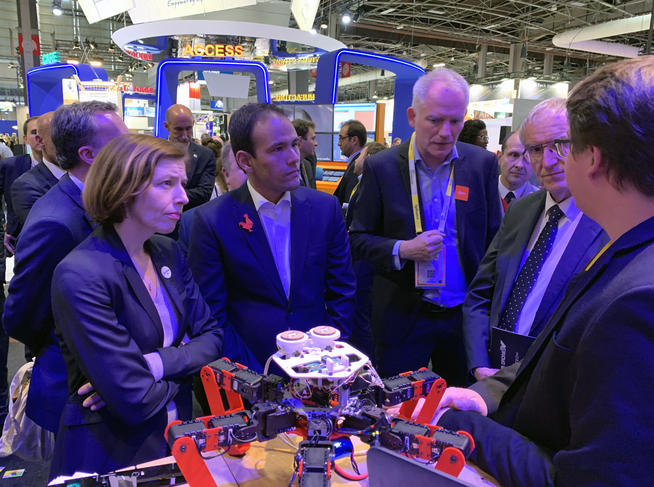
The AntBot robot: Inspired by the desert ant, which has a reputation as an extraordinary solitary navigator, researchers from the CNRS and Aix-Marseille Université have developed the first robot with legs that can move without GPS. AntBot will randomly explore the robotics area of VivaTech before automatically returning to its base, without GPS or cartography. Its secret is a celestial compass sensitive to polarised light, which allows it to find its way.
Interactive Drone: This start-up from the GIPSA-Lab (CNRS/Grenoble INP/Université Grenoble Alpes) in Grenoble (southeastern France) seeks to revolutionise the amusement park industry by combining intuitively piloted drones with video games in mixed reality, in order to propose multiplayer attractions available to a broad public. GIPSA-lab’s algorithms help safely pilot the drone by ensuring it remains within authorised areas and by avoiding collisions. A new recreational experience that can be enjoyed during VivaTech.


